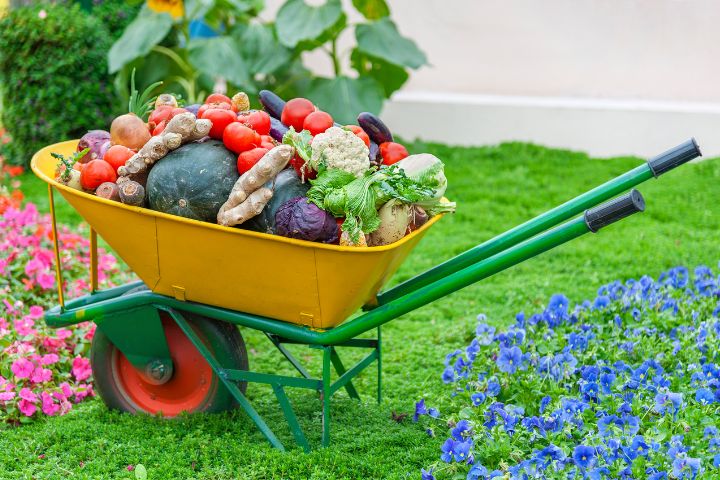

How to plant and grow your own veggie garden - in 8 easy steps
Are you interested in saving money by growing your own vegetables? It's easier than you may think, plus it's rewarding, and the veggies taste so much better than those sitting in a cool room for weeks. Just follow these eight simple steps!
1. In-ground or above-ground?
If you are a homeowner and have good soil, planting directly into the ground is recommended for a more cost-effective approach. Plus, growing in the ground allows for easy expansion of your garden. However, if you're renting or have poor soil quality, a better option would be to plant above ground in pots and planters. This way, you can quickly move your plants whenever you want. The ideal location for planting is generally an area that gets ample sunlight.
2. Prepare your soil
If you plan to plant in the ground, it's good practice to mix some compost into your soil to enhance the growth of your plants, even if your soil is already fertile. However, if you're planting in pots or planters, it's better to mix 75% potting mix with 25% soil before filling them up. This will provide the optimal growing environment for your plants.
3. Choose your veggies
This is an excellent time of year to plant various vegetables and fruits such as tomatoes, cucumbers, peas, carrots, eggplant, lettuce, and strawberries - your strawberries should do well if you have a spot in full sun. If you plant seedlings, you will start to see some growth in just a few days, and many of your plants will be ready to harvest in around 30 days. However, if you choose to plant from seeds, it will take quite a bit longer, so you'll likely be staring at an empty garden bed or planter for several weeks or a month before seeing any sprouts popping up.
4. Get planting
Once you've selected your seeds or seedlings, it's time to plant them in the ground or a planter. Make sure you follow the instructions regarding the appropriate plant depth and spacing between plants. You can find these details on your seed packet or seedling tray. If you're planting climbing plants like tomatoes, cucumbers, and peas, you'll need to insert some stakes or trellis in the ground before planting.
5. Give those plants a drink
When you plant new plants, it is essential to water them immediately. It's also important to provide consistent moisture, particularly during the summer when it can be hot and dry. It is best to avoid watering during the hottest part of the day; instead, water your plants in the early morning or late afternoon. Adding mulch to your garden can also help retain moisture in the soil, suppress weeds, and regulate soil temperature.
6. Control any pests
To keep pests away from your plants, monitor them closely and use natural or organic control methods whenever possible. One effective organic pest control method is to mix one teaspoon of mild soap, such as liquid castile soap, with a litre of water and use a spray bottle to apply it to your plants. Before applying the mixture, it's a good idea to test it on a small part of each plant to check for reactions. You should also check the plants the next day before spraying all of them. Another option for protecting your plants is to use insect netting.
7. Use shade cloth where needed
Some vegetables thrive when exposed to full sunlight, while others may not do so well without shade. The instructions for your seeds or seedlings should provide some basic information regarding optimal growing conditions. Plus, you can research online to find out what your plants need. If you notice the edges of your plants are turning brown, it's probably time to consider adding some shade cloth to protect them.
8. It's time to harvest
Some vegetables, such as tomatoes, peas, and lettuce, will keep producing as they grow. For instance, a single cherry tomato plant can yield the same ripe tomatoes as a punnet every one or two days for over a month. Similarly, lettuces continue to grow, and you can pick only the outer leaves each day for your salad and enjoy the freshest leafy mix for weeks. If you have a plant that needs to be harvested immediately, pick your crop and look for bulk recipes you can make and store in the freezer.
Enjoy those freshly grown veggies
Remember that patience and consistency are crucial to having a successful vegetable garden. Don't get discouraged by any initial challenges; your skills will develop over time. We know that starting a garden involves some initial financial investment, so if you need extra cash to make it happen, we're here to help. Take a look at our cash loans up to $5,000 to find out how quick and easy it is to borrow some extra funds. Once your loan is approved, the cash will usually be in your bank account within a few hours - so you can start planting this week!